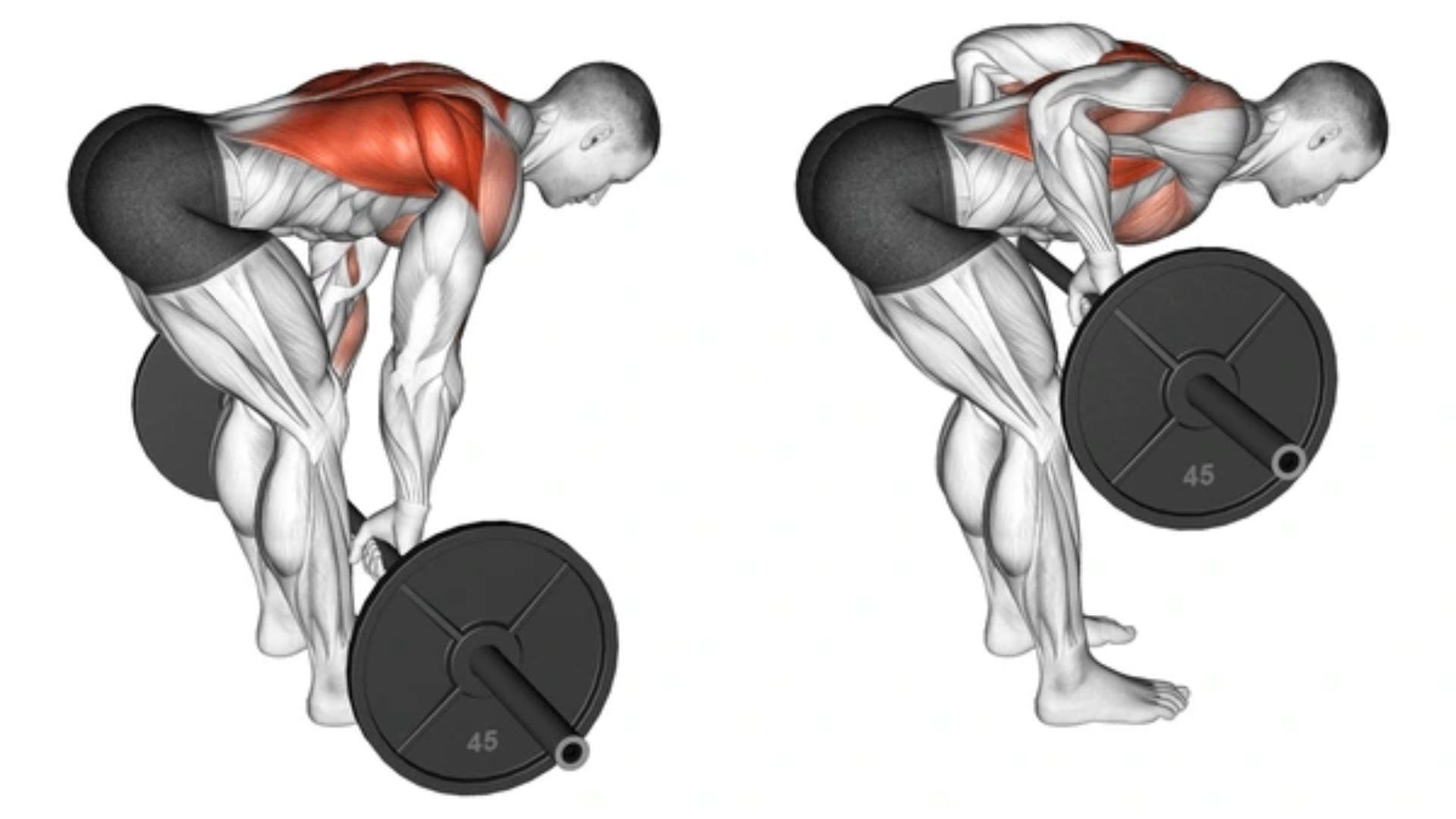
A well-developed back is key to a strong, balanced physique. Not only does it contribute to that coveted V-taper look, but it also plays a critical role in overall upper body strength and posture. Among the various exercises designed to build a powerful back, the Barbell Row stands out as a fundamental movement for targeting the upper and middle back.
The Anatomy of the Back
Latissimus Dorsi (Lats): These large muscles span the width of your back and are responsible for giving your back that wide, V-shaped appearance. They’re heavily involved in pulling movements like the Barbell Row.
Trapezius (Traps): The traps extend from your neck to the middle of your back, playing a crucial role in shoulder blade movement and upper back strength.
Rhomboids: These muscles are located between your shoulder blades and are key players in retracting the scapula, which is essential for good posture and upper back development.
Erector Spinae: Running along your spine, these muscles help maintain posture and provide spinal support during lifting movements.
Rear Deltoids: Although primarily a shoulder muscle, the rear delts contribute to upper back thickness and are engaged during rowing exercises.
How to Perform the Barbell Row for the Upper and Middle Back
Proper Setup:
Foot Position: Stand with your feet shoulder-width apart.
Grip Width: Use a pronated (overhand) grip, with your hands slightly wider than shoulder-width apart.
Body Position: Bend your knees slightly and hinge at the hips, lowering your torso until it’s almost parallel to the floor. Keep your back flat and your core tight.
The Row:
Start the Movement: Begin with the barbell hanging at arm’s length, directly under your shoulders.
Pull the Bar: Engage your back muscles and pull the barbell towards your lower chest or upper abdomen. Focus on squeezing your shoulder blades together as you row.
Lower the Bar: Slowly lower the barbell back to the starting position, maintaining control throughout the movement.
Key Form Tips:
Keep Your Back Flat: A neutral spine is critical to avoid injury and ensure the right muscles are engaged.
Drive with Your Elbows: Focus on pulling your elbows towards the ceiling rather than just lifting the bar with your arms. This technique ensures the upper and middle back muscles are doing the work.
Control the Descent: Don’t let the bar drop quickly; the negative phase (lowering the bar) is just as important for muscle growth.
Common Mistakes to Avoid:
Rounding the Back: This can lead to serious injury. Always keep your back flat and your core engaged.
Using Momentum: Swinging the body to lift the bar takes the focus off the back muscles and can result in poor form.
Lifting the Torso: Avoid raising your torso as you row. Keep your body position consistent to target the correct muscles.
It’s here Barbell Bench Press how to do it and what are the benefits
FAQs
Q: How often should I perform Barbell Rows for back development?
A: For balanced back development, incorporate Barbell Rows into your routine 1-2 times per week. This allows for sufficient recovery while promoting strength and muscle growth.
Q: Can beginners do Barbell Rows?
A: Yes, beginners can and should perform Barbell Rows, but it’s important to start with a lighter weight to focus on mastering form before progressing to heavier loads.
Q: What’s the best grip for targeting the upper and middle back?
A: A pronated (overhand) grip is generally the most effective for targeting the upper and middle back. Ensure your hands are placed slightly wider than shoulder-width apart for optimal muscle engagement.
Q: Should I use a lifting belt when performing Barbell Rows?
A: A lifting belt can be helpful for added lower back support, especially when lifting heavier weights. However, it’s not always necessary, particularly if your core strength is sufficient.
Q: How does the Barbell Row compare to other rowing exercises?
A: The Barbell Row is one of the most effective exercises for overall back development. However, incorporating variations like dumbbell rows, T-bar rows, and seated cable rows can help target different areas of the back and prevent muscle imbalances.

